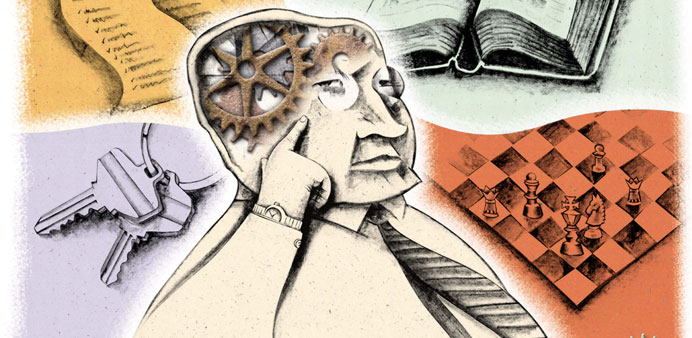|
|
With no cure in hand for Alzheimer’s disease, many ask why someone would necessarily want an early diagnosis. But research continues to focus on detecting the earliest signs of dementia, and on the factors that give rise to some dementias or fuel their relentless progression.
Those findings may point the way to prevention strategies. And they may allow physicians to recognise Alzheimer’s disease and other dementias before they have taken a measurable toll. Stopping or slowing it there might be easier than reversing it, and could, for all practical purposes, be as good as a cure.
Two new studies offer insights into what early-life factors may set the disease in motion, and how Alzheimer’s might readily be detected in its earliest stages.
One of those tracked nearly a half-million Swedish men from their late teens to middle age to discern possible triggers of early-onset Alzheimer’s (defined as Alzheimer’s diagnosed before age 65).
Another explored the ability to recognise and name famous faces in those with early-onset dementia. The study identified the brain structures that are implicated when those deficits take root, and gives physicians a quick way to detect problematic cognitive changes in their patients.
That new screening test may be the only place where Princess Diana, Mohamed Ali, Albert Einstein, Elvis Presley, Oprah Winfrey and Pope John Paul II can all be seen in one sitting. If you’re between 40 and 65 and can’t name them readily, a physician might raise concerns about primary progressive aphasia, a form of dementia that most often sets in in midlife and disrupts a person’s ability to name objects and people, but leaves other cognitive skills intact.
If you don’t seem to recognise many of the famous faces at all, a physician might explore further the possibility of frontotemporal lobar dementia or early Alzheimer’s disease, both of which seriously disrupt facial recognition.
The screening test is the work of a group of researchers from Northwestern University, and is published in the journal Neurology.
In a study published online recently in JAMA Internal Medicine, a team of Swedish researchers took advantage of that country’s traditions of universal conscription, universal health care and standardised medical records to see which young men were most likely to develop early-onset Alzheimer’s.
Tracking 488,484 men from their first military physical for an average of 37 years, they found that those with high systolic blood pressure, low cognitive function and short stature in late adolescence were significantly more likely to develop early-onset dementia.
In all, 487 of the men went on to be diagnosed with early-onset dementia.
Other factors were seen far more frequently in young adults who would develop early dementia than in those who did not: paternal dementia, occurrence of alcohol or other drug intoxication, stroke, taking antipsychotic medication and depression.
Young men with at least two of these risk factors, and who ranked in the lowest one-third in terms of cognitive function, had a 20-fold greater likelihood than average to develop early-onset dementia, the authors concluded. Collectively, the nine factors accounted for 68% of the instances of early-onset dementia one would expect to see in a broad population of men.
Hypertension in midlife has been associated with later dementia. But this is the first study to find that high blood pressure even in adolescence may boost a person’s risk of developing dementia.
That finding alone may suggest a strategy for preventing catastrophic cognitive decline - treating hypertension early and aggressively, wrote Dr Deborah A Levine of the University of Michigan Health System’s Department of Internal Medicine in an accompanying editorial.

